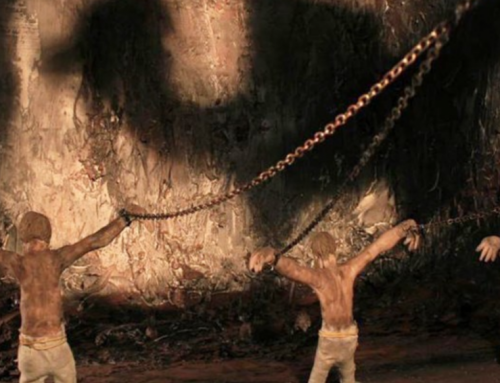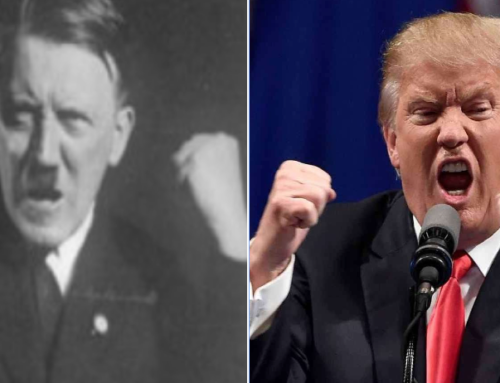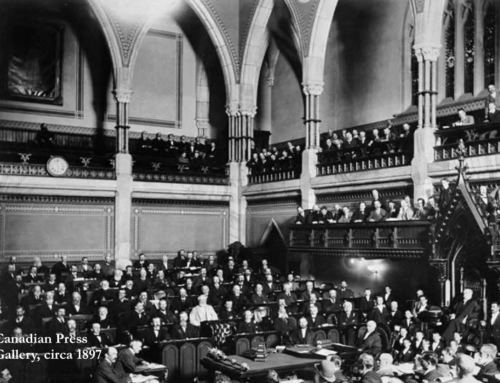(Above centre) Genius Srinivasa Ramanujan at Cambridge (1914)
Five things you might not know:
- Einstein and Feynman had their genius-equal in Srinivasa Ramanujan, an Indian mathematician, who faced racism and bigotry from the white, arrogant Cambridge intelligentsia before his young life was cut short at age 32 (1887-1920).
- “Americans … [and] their sense of equality and human dignity is mainly limited to men of white skins … I am firmly convinced that whoever believes this suffers from a fatal misconception.” – Albert Einstein.
- Mary Wollenstonecraft, who died in 1797, was one of the first women to speak and write publicly against misogyny and advocate for women’s rights.
- The first black general preceded the second, Colin Powell, by a couple of hundred years.
- Whites make up only 16% of the world’s population.
Synopsis
If you are White and living in a predominately white neighborhood in the Western world (i.e., USA, Canada, Britain, Germany, Italy, etc.), then you need leaders to address the problem of racism, misogyny and lost humanity sooner versus later. Because soon the shoe will be on the other foot. Here are five suggested books that illuminate humanity’s unresolved struggle with this inherent and destructive legacy.
(5 minute read)
We hope Donald Trump has read more books than he has authored (sixteen). At a Trump website, under a list of published books there’s this statement: “For once, the mind of this internationally renowned business mogul is an open book.” Well, over the last year the book on Donald’s character, values and mental capability has been opened and we have gained considerable insight into who he is. And it’s obvious to most that he could benefit from an increased understanding of racism, misogyny, intelligence and what leadership really is.
I don’t care how many golden towers Trump has built or how many bankruptcies his business acumen has caused, if he (and other leaders) don’t have the requisite knowledge and beliefs to clearly see, and admit, our pathological legacy of racism and misogyny and understand how it continues to undermine human progress, then he, and others, are not fit to lead.
The thinking behind having Trump and other leaders catch up on their reading is this:
We need extraordinary leadership to break the eternal, destructive cycle of racism, misogyny and bigotry that is so ingrained in our cultures and so subverts the full potential of our civilization.
If you are White and living in a predominately white neighborhood in the Western world (i.e., USA, Canada, Britain, Germany, Italy, etc.), you need leaders to address these problems sooner versus later. Because soon the shoe will be on the other foot. In thirty years, Whites in the US will be in the minority (2043) and worldwide, Whites are already a minority (16%). And “making America great again” won’t happen by hiding in a gated country behind a “huge” wall. That thinking won’t solve anything if we have leaders who believe a minority should hunker down in a racist nation and simply defend its encumbered beliefs. In fact, it will exacerbate the problem.
Recommended reading
Let’s start by providing a small excerpt from a historic comment by Albert Einstein’s in his essay, “The Negro Question” part of a collection of essays written between 1931-1950 in Essays In Humanism.
There is, however, a somber point in the social outlook of Americans. Their sense of equality and human dignity is mainly limited to men of white skins … I am firmly convinced that whoever believes this suffers from a fatal misconception. Your ancestors dragged these black people from their homes by force; and in the white man’s quest for wealth and an easy life they have been ruthlessly suppressed and exploited, degraded into slavery. The modern prejudice against Negroes is the result of the desire to maintain this unworthy condition.
I believe that whoever tries to think things through honestly will soon recognize how unworthy and even fatal is the traditional bias against Negroes.What, however, can the man of good will do to combat this deeply rooted prejudice? He must have the courage to set an example by word and deed, and must watch lest his children become influenced by this racial bias. I do not believe there is a way in which this deeply entrenched evil can be quickly healed. But until this goal is reached there is no greater satisfaction for a just and well-meaning person than the knowledge that he has devoted his best energies to the service of the good cause.
Five enlightening reads on the irrational darkness of bigotry
 The Man Who Knew Infinity: A Life of the Genius Ramanujan by Robert Kanigel (1991)
The Man Who Knew Infinity: A Life of the Genius Ramanujan by Robert Kanigel (1991)When Srinivasa Ramanujan (1887-1920), an Indian mathematician, was at Cambridge in 1914, he faced the legacy of racism, despite his brown-skinned genius being noticeably superior to Cambridge’s white-skinned arrogance. His work was greeted dismissively and his application for a fellowship was denied by the arrogant, bigoted, white Cambridge faculty. Ramanujan said of his unparalleled mathematical discoveries, “Why do they not believe me? Because I am Indian.”
This is must reading for Donald Trump. Or he can watch the movie. Anything that might help him begin to see the folly of bigotry.
 A Vindication of the Rights of Woman (1792) by Mary Wollstonecraft
A Vindication of the Rights of Woman (1792) by Mary WollstonecraftIn the late 18th century, the founding fathers of colonial America were not the only ones rebelling against British aristocracy. Mary Wollenstonecraft (1759-1797), a writer, philosopher and feminist advocated for women’s rights and wrote novels and treatises as well as a history of the French Revolution. She is best known for A Vindication of the Rights of Woman (1792). Wollenstonecraft said then what women continue to struggle against, over 200 years later: Both men and women should be treated as rational beings and she imagined a social order founded on reason.” If Mary were alive today she’d be horrified that women are still fighting the same fight. What the hell is taking so long? Is it that too many white men remain in charge?
 The Republic (380 BC) by Plato
The Republic (380 BC) by PlatoAs far back as the great philosophers of Ancient Greece, leaders recognized the bigoted inequality of humanity.
Are dogs divided into hes and shes, or do they both share equally in hunting and in keeping watch and in the other duties of dogs? Or do we entrust to the males the entire and exclusive care of the flocks, while we leave the females at home, under the idea that the bearing and suckling of their puppies is labour enough for them? – The Republic.
The Republic states that women should “work alongside men, receive equal education, and share equally in all aspects of the state. The sole exception involved women working in capacities which required less physical strength.” Plato would be pleased with recent advancements of women in the armed services but I am sure he’d ask: What the hell is taking you so long on all the rest of it?
 The Black Count (2012) by Tom Reiss
The Black Count (2012) by Tom ReissThis is real-life imitating fiction so perhaps Trump will relate to it. It’s a wonderful story about a black war hero in revolutionary France, General Alexandre Dumas Davy de la Pailleterie (1762-1806). He was the father of Alexandre Dumas, author of The Count of Monte Cristo and The Three Musketeers, and he was the highest ranking black officer in history until the American, Colin Powell.
The story of General Dumas brilliantly illuminates the first true age of emancipation: a single decade during which the French Revolution not only sought to end slavery and discrimination based on skin color but also broke down the ghetto walls and offered Jews full civil and political rights, ending a near-universal discrimination that had persisted since ancient times. General Alexandre Dumas, wrote a French historian at the end of the nineteenth century, ‘was the living emblem of the new equality.’ – The Black Count, Prologue, p.11
Tom Reiss states in the Prologue: “I undertook the project of reconstructing the life of the forgotten hero General Alexandre Dumas because of the passage in his son’s memoirs, “The worst sin anyone can commit is to forget.”
 A Troublesome Inheritance: Genes, Race and Human History (2014) by Nicholas Wade
A Troublesome Inheritance: Genes, Race and Human History (2014) by Nicholas WadeRace may be a troublesome inheritance, but better to explore and understand its bearing on human nature and history than to pretend for reasons of political convenience that it has no evolutionary basis.
So much about race is about keeping people apart because of their outward appearance and distinct traits developed under the selectivity of Darwinian evolution. Wade points out that for millennia humans stayed where they were and created distinctly different appearances and characteristics and yet, overall they are very much the same. In fact, they remain genetically 98.8% the same as the chimpanzee and bonobos from whom our species separated about 5 to 7 million years ago. We are more the same then we are different, much more.
Wade, a longtime journalist at the The New York Times (now retired), places race smack in the middle of human evolution and utilizing recent scientific evidence, makes a case for his personal belief in the fundamental equality of all humans. Many of his illuminating claims are the foundation for a much deeper and broader conversation about race without the human predilection for bigotry.
Wade’s book puts in perspective the myopic nature of our unwillingness to face the reality of race in today and across history.
The major civilizations occur within … the peoples of all three races [East Asians, Caucasians, Blacks] and they were thus following parallel paths along which China’s slight lead and Africa’s slight lag are, on an evolutionary timescale, essentially trivial variations.
We have all come from the same place, we’re all branches on the same family tree, which is elegantly described in this excerpt below.
Chapter 10: Evolutionary Perspectives On Race (excerpt page 239)
Imagine that you, if an English speaker of European descent, are standing on a hill with someone from East Asia and another from Africa. Through a slip in the space-time continuum, you suddenly find that you are holding your mother’s hand, and she your grandmother’s, and so on through a long line of ancestors that stretches down the hill. The same living ancestors have appeared beside the East Asian and. the African, and the three lines of women holding hands snake down the hillside to the valley below.
You let go of your mother’s hand and walk down the hill to review the three lineages. The women holding one another’s hands are standing 3 feet apart. The average generation time through most of history has been around 25 years, meaning there have been four generations per century. So every 12 feet you walk encompasses a century of ancestresses, and every 120 feet a thousand years.
You pass by your ancestors in wonder but cannot communicate with them; the shifting languages they speak are now far ancestral to English10. Their faces soon lose their distinctively European features, although their skin is still pale. After you have walked 3,600 feet, just over two thirds of a mile, a strange thing happens. A woman is standing between your line of ancestresses and those of the East Asian and at her position the two lines merge into one. She is holding in one hand the hands of her two daughters, one of whom is first in the European line and the other the first in the East Asian line.
As you continue down the hill, you are reviewing just two lineages, the now joint European–East Asian line and that of Africans. The people in the joint line grow steadily darker in complexion, since they lived before humans expanded to extreme northern latitudes and developed pale skin. Then, after you’ve been walking just over a mile, it is the turn of these two lineages to converge converge into one. There stands a woman holding the hands of two daughters, one of whom stayed in Africa and the other joined the small hunter-gatherer band that left the ancestral homeland some 50,000 years ago. In a walk of some 22 minutes, the human species has been reunified before your eyes.
Had you continued walking for another hour, all of it along African ancestors, you would have reached the 200,000 year mark, the earliest known appearance of modern humans. Three quarters of modern human existence has been spent in Africa, only the last quarter outside it. Today’s races hold three quarters of their history in common, only one quarter apart. 2
From an evolutionary perspective, the human races are all very similar variations of the same gene pool. The question that looms over all the social sciences, unanswered and largely unaddressed, is how to explain the paradox that people as individuals are so similar yet human societies differ so conspicuously in their cultural and economic attainments.
The argument presented in the pages above is that these differences do not spring from any great disparity between the individual members of the various races. Rather, they stem from the quite minor variations in human social behavior, whether of trust, conformity, aggressiveness or other traits, that have evolved within each race during its geographical and historical experience. These variations have set the framework for social institutions of significantly significantly different character. It is because of their institutions—which are largely cultural edifices resting on a base of genetically shaped social behaviors—that the societies of the West and of East Asia are so different, that tribal societies are so unlike modern states, and that rich countries are rich and poor countries deprived.







Leave A Comment